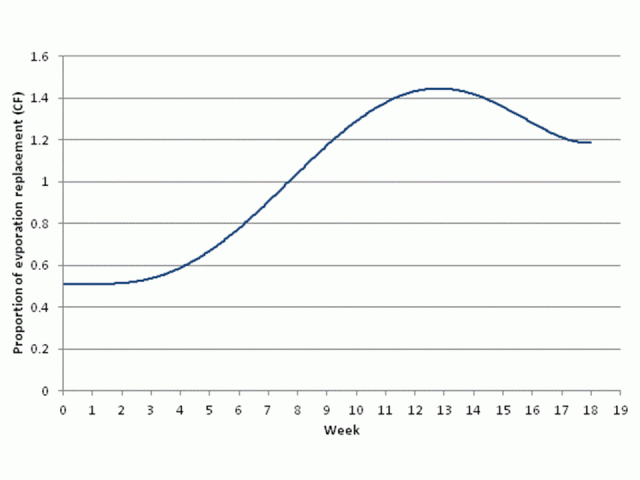Irrigation principles
Water use is determined by crop type, growth stage and evaporation.
Evaporation is determined by weather and can be measured with an evaporation pan or calculated from weather station data. Formulae that take account of solar radiation, wind speed, temperature and humidity are used to calculate evaporation representative of a Class A pan or evapotranspiration representative of a standard sward of grass.
Plant water demand changes with growth stage, generally increasing from planting until maturity then decreasing through senescence or harvest.
Water demand as a proportion of evaporation is called a crop factor or crop coefficient. Factors affecting the water demand include crop type, growth rate, canopy area, fruit production or grain fill and senescence.
Crop factors (CFs) are shown for drip irrigated tomatoes in Figure 1.

Daily water demand = evaporation x crop factor — or — evapotranspiration x crop coefficient.
Further information on how to schedule using evaporation and crop factors can be found in the evaporation-based irrigation scheduling page.


